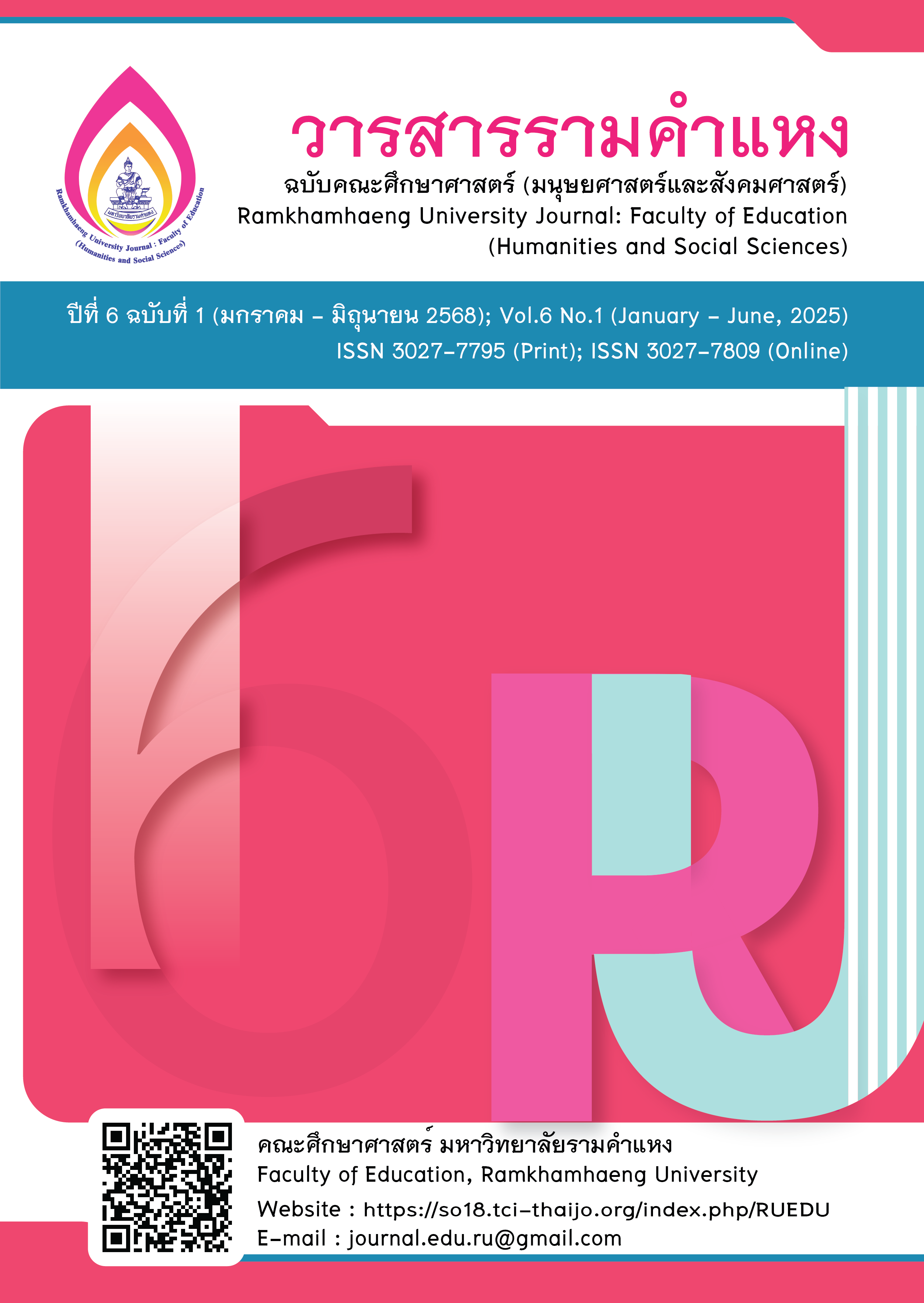ห้องเรียนกลับด้านสองทิศทาง: การจัดการเรียนรู้ที่ส่งเสริมการคิดสร้างสรรค์และทักษะดิจิทัล
Main Article Content
บทคัดย่อ
การจัดการเรียนรู้แบบห้องเรียนกลับด้านสองทิศทางเป็นการจัดการเรียนรู้ตามแนวคิดการเรียนรู้ แบบผสมผสาน ซึ่งเป็นการจัดการเรียนรู้ที่ต่อยอดจากการเรียนรู้แบบห้องเรียนกลับด้านแบบดั้งเดิม โดยหลักการสำคัญที่ แตกต่างจากการเรียนรู้แบบห้องเรียนกลับด้าน คือการขับเคลื่อนการเรียนรู้สามารถเกิดขึ้นได้สองทิศทาง ทั้งจากผู้สอนและ ผู้เรียน ผ่านกระบวนการสร้างงานดิจิทัลหรือสื่อประสมต่าง ๆ ตามหลักทำงานร่วมกัน แล้วแบ่งปันเพื่อเรียนรู้ ตรวจสอบ หรือ ประเมินผลร่วมกัน ซึ่งการเปิดโอกาสให้ผู้เรียนได้สร้างงานดิจิทัลแบ่งปันการเรียนรู้เป็นกลไกสำคัญที่ช่วยฝึกฝนและพัฒนา การคิดสร้างสรรค์และทักษะดิจิทัลแก่ผู้เรียนได้
Downloads
Article Details

อนุญาตภายใต้เงื่อนไข Creative Commons Attribution-NonCommercial-NoDerivatives 4.0 International License.
ผู้ส่งบทความ (และคณะผู้วิจัยทุกคน) ตระหนักและปฎิบัติตามจริยธรรมการวิจัยอย่างเคร่งครัด ทั้งนี้บทความ เนื้อหา ข้อมูล ข้อความ ภาพ ตาราง แผนภาพ แผนผัง หรือข้อคิดเห็นใดๆ ที่ปรากฎในบทความ เป็นความคิดเห็นและความรับผิดชอบของผู้ส่งบทความ กองบรรณาธิการไม่จำเป็นต้องเห็นตามเสมอไป และไม่มีส่วนรับผิดชอบใดๆ โดยถือเป็นความรับผิดของของเจ้าของบทความเพียงผู้เดียว
เอกสารอ้างอิง
Anderson, L. W., & Krathwohl, D. R. (2001). A taxonomy for learning, teaching, and sssessing: A revision of Bloom’s taxonomy of educational objectives. Addison Wesley Longman.
Alison, K. (1993). From sage on the stage to guide on the side. College Teaching, 41(1), 30–35. https://doi.org/10.1080 /87567555.1993.9926781
Bergmann, J., & Sams, A. (2012). Flip your classroom: Reach every student in every class every day. International Society for Technology in Education.
Bloom, B. S. (1956). Taxonomy of educational objectives. Handbook II: Affective Domain. Mckay.
Bull, P. (2014). Mobile and online instruction: Double-flipping a graduate level course to dupport instruction. In M. Searson & M. Ochoa (Eds.), Proceedings of SITE 2014--Society for Information Technology & Teacher Education International Conference (pp. 2080-2085). Jacksonville, Florida, United States: Association for the Advancement of Computing in Education (AACE). https://www.learntechlib .org/p/131095
Churches, A. (2008). Bloom’s digital taxonomy. https://www.researchgate.net/publication/228381038_ Bloom's _Digital_Taxonomy
Crouch, C., & Mazur, E. (2001). Peer instruction ten years of experience and results. American Journal of Physics, 69, 970-977.
Educational Service Division Suan Sunandha Rajabhat University. (2020). Teaching evaluation report. www.reg.ssru.ac.th/isqy32 (in Thai)
Faculty of Polymer Technology. (n.d.) Flipped classroom in theory: General framework, terminology and pedagogy. https://www.polyflip.eu/Flipped-classroom-in-theory/General-framework-terminology-and -pedagogy
Horn, M. B., & Staker, H. (2014). Blended: Using disruptive innovation to improve dchools. Jossey-Bass.
Keengwe, J., & Onchwaari, G. (2016). Handbook of research on active learning and the flipped classroom model in the digital age. The IGI Global book.
Office of the Civil Service Commission. (n.d.) Digital literacy project. https://www.ocsc.go.th/DLProject/meandlp (in Thai)
Sarria, A., & Molina, E. C. (2015). An innovation sensation: Shifting charter schools from traditional to blended learning models. http://charterschoolconference.com/2013/handouts/Carrandi_Blended_Learning _Model.pdf
Wongyai, W., & Patphol, M. (2019). Development of creative innovation dkills. Curriculum and Learning Innovation Leadership Center. http://www.curriculumandlearning.com/upload/Books/การสร้างสรรค์ นวัตกรรม_ 1567745143.pdf (in Thai)


